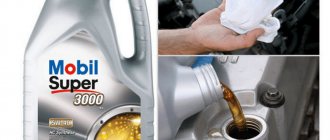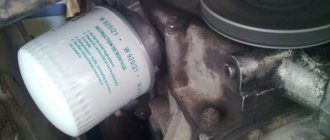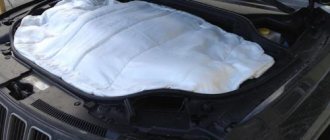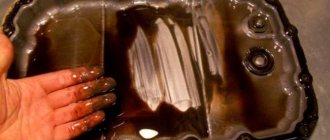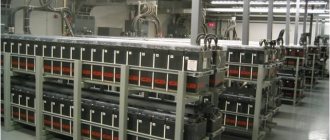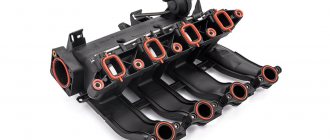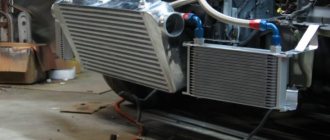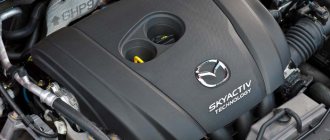What causes a decrease in temperature
Any equipment is not immune from failure of some components and assemblies. It is necessary to pay attention to the condition of the machine and its systems. An unpleasant situation when the engine temperature drops while driving is due to malfunctions of the cooling system elements. To understand the essence of the problem, it is necessary to have a general understanding of how the power plant is cooled.
Causes and solutions to problems of temperature sensor needle jumping
As for the situation when the temperature sensor needle jumps and does not even allow you to approximately determine the indicators, in this case there has been a breakdown in the system. There may be several of them, so you need to be aware of all possible cases.
Most experienced drivers remember the importance of constantly monitoring engine temperature, because this data can tell a lot. Namely, to report possible problems in the cooling system and other malfunctions. If you notice this problem in time, you can minimize the damage and avoid costly repairs.
Very often, newbies behind the wheel neglect the importance of tracking these readings, but even experienced car owners are powerless if the temperature sensor needle jumps like crazy and does not allow them to correctly assess the situation. This is a good reason to diagnose the equipment, but regardless of whether you do it yourself or send it to a service center, any driver should understand the reason for this arrow behavior.
How to diagnose the cause of a drop in engine temperature
If while driving the sensor needle drops and stops responding for some time, then the problem is a malfunction of the sensor itself, and it will need to be replaced.
Movement is carried out at average speed (70 km/h), while maintaining a low engine temperature. In most cases, the problem is a stuck thermostat. When the heat-removing liquid is heated, the device switches to a large circulation circle and acts as a regulator. In winter, the liquid flows almost all the time along a small circuit without the participation of a radiator.
Checking the operation of the temperature controller can be carried out without moving the car. On site you will need to start and warm up the car for 20-30 minutes. After these steps, open the hood of the car and try heating the pipes at the top and bottom of the radiator. One tube should be warm, the other cold. If the pipes are at the same temperature, then the thermostat has failed.
Design features of power units
Before proceeding directly to analyzing the situation with the temperature drop in the power unit, it is necessary to consider the design features of the engine. As many car enthusiasts know, coolant circulates through the system, thereby cooling the entire engine. A car engine has two circulation circles - small and large.
The movement of coolant in a small circle ensures faster heating of the engine at idle. So, the engine can be warmed up quickly enough even in the most severe frost. When the temperature reaches 90 degrees Celsius (average concept), the thermostat opens and the coolant begins to flow in a large circle through the radiator. Thereby cooling the engine to the desired temperature.
Cooling features of domestic cars
The winter season never passes carefree for car enthusiasts who own early brands of Zhiguli. Engine temperature (VAZ-Six is no exception) is often disappointing due to a sufficient number of flaws in the design of the thermostat and cooling system pipelines. There is a possibility in the cold season that the motor will not be able to reach operating temperature due to the natural airflow of the unit. Therefore, motorists use the function of closing the blinds located near the radiator. If they are not available, other devices may be used.
Engine temperature drops at idle: how to fix
Experts strongly recommend that you inspect the vehicle before driving. Such visual diagnostics help to identify various deviations in its operation, allowing them to be quickly eliminated.
Particular attention must be paid to the indicators of the main systems, one of which is the operating temperature of the machine’s engine.
It is displayed on the dashboard in the form of a small arrow display. Basically, motorists are faced with overheating of the power unit.
Reverse deviations often occur when the driver notices that the engine temperature drops while driving.
No vehicle is insured against breakdowns. Car components and assemblies consist of many small components, the functional life of which has significant limitations. If a car owner notices that the temperature of the internal combustion engine is dropping while driving, he needs to pay close attention to the integrity of the cooling system elements. This is where the causes of the problems lie.
The essence of the cooling system is the movement of a special liquid - antifreeze through two technological circles. One of them is small and does not provide for the passage of coolant through the cooling radiator located in the front part of the engine compartment. It is limited to circulation only along the “shirt”.
The passage of a large contour begins to occur when driving over medium and long distances. A special thermostatic valve is responsible for switching circles, opening the path for coolant into the radiator when it gets too hot. There the antifreeze cools down and returns to the system already cold.
It is separately noted that not only antifreeze, but also antifreeze, and even ordinary water can be poured into the cooling circuit.
The most common problems are when the temperature of the unit increases uncontrollably, reaching critical values. The cause of overheating is a jammed thermostat, which does not allow the coolant to pass through the radiator. The heated antifreeze continues to circulate in a small circle until it boils.
The opposite situation often occurs when the engine temperature gauge drops while driving. Why? The point, again, is the quality of operation of the mentioned valve. If the thermostat cannot close all the way, allowing the fluid to continuously circulate in a large circle, the engine will not warm up to its operating temperature.
Sometimes the temperature regime changes abruptly, sometimes increases, sometimes decreases sharply. This means that the valve periodically jams, and the driver will notice a situation where the temperature arrow periodically drops.
There are other technical reasons that affect the underheating of a car’s power unit:
- Fan malfunction. This electrical element should turn on only when the control unit gives it a special command based on the readings of temperature sensors. Failures in the coordinated operation of the system can lead to the fan operating in constant mode, or starting to function even when it is not necessary. Sometimes even the sensor turns out to have nothing to do with it, and the rotation of the blades causes a normal wiring short circuit.
- Problems with viscous couplings are also common. They are typical for models that have a longitudinally mounted motor, the fan of which bases its operation on a special device - an electronic clutch. Its jamming will not allow the element to turn off, and the car engine will not be able to warm up to operating levels.
Yes, this option is also allowed by specialized specialists. Even if there are no malfunctions in the operation of the vehicle systems, the indicator needle may still fall while driving.
Similar situations occur in winter, when the air temperature drops to low values. For example, when driving on country roads in severe frost, the driver may notice significant cooling of the engine.
Read more: Why is the oil change interval important in a diesel engine, the consequences of non-compliance with it
The fact is that the flow of icy air entering the engine compartment can exceed the heating intensity of the engine. At an average speed of 90-100 km/h, which is optimal for most car models, a minimum amount of fuel burns inside the cylinders.
The relationship between these factors is direct: the less fuel ignites in the combustion chambers, the slower the internal combustion engine will warm up. If we add to this the forced cooling that occurs from the oncoming air flow, the engine may not only not heat up, but even significantly reduce its temperature in the event of preheating.
The inclusion and constant operation of the cabin heater has no less a strong impact than malfunctions or frost.
It is especially noticeable on small cars and models equipped with medium-sized engines.
The situation is also typical for diesel engines, which not only do not warm up well at idle, but also cool down quickly when driving with insufficient intensity.
The car heater has a special radiator, which is included in the general operating circuit of the cooling system. When the driver turns on the interior heating, antifreeze passes through it, giving off some of the heat. The amount that will be given depends on the set temperature of the heater and its operating mode. The higher these indicators are, the more the interior of the car will heat up.
If the engine operates at low speeds, and is also used in winter, there may simply not be enough heat to fully warm up the coolant. In such a situation, the engine will not reach its operating temperature.
In order for the car to be operated in optimal operating mode of the power unit, several rules must be followed:
- The car owner must monitor the quality of the cooling system. Periodic diagnostics require not only the thermostat and fan, but also the antifreeze itself. It is necessary to maintain its regulated quantity, avoiding minimum values. Air pockets must be removed from the system and any leaks must be eliminated. The coolant also needs timely replacement. The amount of its functional resource is determined individually for each individual model.
- Traveling in the cold season should be carried out in medium speed mode, at the level of 3000-3500. It is recommended to use a lower gear more often, especially when driving on the highway.
- An excellent solution would be to insulate the engine compartment. Even the presence of ordinary cardboard inserted in front of the cooling radiator can improve the situation. If the owner covers the engine compartment with porous materials or felt, the engine will warm up noticeably faster, and its natural cooling will no longer have a significant effect on operation.
Note that a decrease in the temperature of the internal combustion engine while driving can also occur naturally and not be a consequence of any malfunction. This usually manifests itself in the cold season, that is, during frosts. On many cars, when driving on the highway, the engine temperature drops, since the radiator and the front part of the engine compartment are open to oncoming air.
Now let's imagine that the car is moving in cold weather at low engine speeds (about 2000 rpm) at an average speed (for example, 80-100 km/h in 5th gear). This mode can be considered the most economical, that is, the minimum amount of fuel burns in the cylinders.
Do not forget that in winter the driver constantly uses the stove in the cabin, which additionally takes away heat.
This phenomenon is typical for entry-level and middle-class cars, which are often equipped with low-volume internal combustion engines and do not have additional hood insulation.
It is also worth noting that many diesel engines do not heat up well at idle and can cool down noticeably while driving. This happens due to the higher efficiency and other individual characteristics of these power plants.
As we said above, turning on the interior heater can affect the engine temperature. In short, many cars have a so-called heater radiator. The specified radiator is included in the general circuit of the engine cooling system, that is, the coolant heated from the engine passes through the radiator, giving off heat.
For better heating of the interior and internal combustion engine, as well as complete warming up of the gearbox, it is enough to drive the car for several kilometers at medium speed (about 3-3.5 thousand rpm) in a low gear. Also, many drivers use the method of additional insulation of the engine compartment using felt, installing a cardboard or plastic damper on the radiator, etc.
Read more: Motor oils of their brands, characteristics, manufacturer ratings
This decision to insulate the engine for the winter is fully justified in cases where the car is operated in conditions of intense cold for a significant part of the time. With additional insulation of the hood and the engine itself, the engine does not cool down so quickly after stopping and warms up faster at idle and while driving. Consequently, the stove in the cabin also works better.
Finally, we would like to add that the quality operation of the entire cooling system depends on antifreeze/antifreeze and its quantity in the system.
For this reason, it is necessary to monitor the condition of the coolant and regularly check the fluid level in the expansion tank.
You should also monitor the tightness, avoid the formation of air locks, change antifreeze in a timely manner and flush the engine cooling system when replacing the working fluid.
Engine temperature rises and falls while driving
- Engine temperature drops at idle: how to fix
- Many motorists on forums ask the question why the engine temperature drops at idle.
- In this case, everyone advises immediately changing the thermostat or turning off the stove, but it is worth examining the situation in more detail.
Using water as a cooling medium
The use of water to cool the power plant in winter is not recommended, but is allowed. The system must be filled with already heated water to avoid difficult starting of the engine with increased wear of parts. The radiator and motor must be insulated. Heated water must be poured with the drain valves open several times. Then close the taps, fill the system and start starting.
What should the engine operating temperature be?
Many car enthusiasts wonder what the optimal operating temperature of the engine should be. The question is far from clear and much depends on its design features. So for any person the normal temperature is 36.
6 degrees, providing its owner with a healthy existence, when all life processes proceed without any deviations.
Likewise, for automobile engines there is a design temperature at which they are able to operate stably, with full power output, in economical mode for a long time.
The process of combustion of the air-fuel mixture in the cylinders is accompanied by the release of a large amount of heat, since the temperature in the combustion chamber is about 2000 degrees and higher.
The task of the cooling system is to maintain optimal thermal conditions in the range of 80-90 degrees.
For some types of power plants, temperatures up to 110 degrees can be normal, more often on air-cooled engines.
At optimal temperature conditions, there is better filling of the cylinders, stable starting and reliable operation of the vehicle.
Checking the functionality of the thermostat yourself
When the engine temperature drops unreasonably while driving, you will need to dismantle this element, prepare a container with liquid, place the device there and find out at what temperature the valve will open. If this does not happen, there is a malfunction.
To carry out work on removing any mechanisms, you need to have an understanding of their structure. Otherwise, other unplanned problems may arise. If you have no idea about the structure of the mechanisms, then you should contact specialists who perform this work efficiently. They will additionally give some useful tips and answer any questions you may have.
Topic in the “Audi Repair” section, created by skol13, March 5, 2011.
You are using an outdated browser. This and other sites may not display correctly. You need to update your browser or try using a different one.
Hi all. We have a Priora 2012, with an E-pedal. The cooling system is equipped with additional Bosch pump. In general, I have all the alterations in my BZ. Everything seems to be fine. The cabin is hot and warms up quickly. The problem is this. Yesterday it was -9 degrees. I was driving along the highway at a speed of 120-140 km/h. Stove to maximum. The engine temperature drops to 73-75 degrees and it feels like the stove is heating slightly less. As soon as the speed drops to 100 km/h or less, the temperature immediately drops to 83-85. and again a steam room in the salon. Is the problem really the intense blowing of oncoming cold air? What will happen at -25 then? How to buy a radiator grille cap for 99?
Elimination methods
Of course, the reasons are quite banal and understandable to almost every motorist. Still, it is worth considering in more detail all the reasons and factors that may affect the decrease in the temperature of the power unit at idle speed.
The first reason for the temperature drop at idle speed may be a thermostat that is stuck in the open position. You may not notice this while driving.
But at idle speed, when the car is stationary, the coolant should flow in a small circle, but it flows in a large circle, which prevents it from heating up to 90 degrees. Thus, the radiator absorbs most of the heat received.
To eliminate the malfunction, it is worth checking the unit and, if necessary, replacing it. This is done easily, since structurally, all manufacturers have provided a design that is easy to replace.
Stove on
When it’s winter outside and the car interior needs to be heated, motorists turn on the heater. This heater is inextricably linked with the engine, since this is where the hot coolant comes from to heat the heater radiator. But why can this unit cause a temperature drop in the system itself?
Structurally, it turned out that when operating the power unit at idle speed, it should not overheat. The main operating temperature in this operating mode becomes 80-90 degrees. And if you open the stove tap, the number of heat transfer elements will increase. Moreover, all the heat is drawn from the radiator into the cabin.
When it’s frosty outside, this additionally cools the engine, which prevents it from heating up. Therefore, before turning on the heater to warm the interior, it is recommended to warm up the engine to operating temperature.
Radiator fan
One of the reasons for a drop in engine temperature at idle speed may be a cooling system fan that is turned on and does not turn off. The power unit in this mode of operation does not heat up completely, and there is also additional cooling. This factor is triggered if the coolant circulates in a large circle.
There can be many reasons why the electric fan does not turn off. One of them is a malfunction of electrical systems. Thus, failure of the temperature sensor will cause incorrect readings that come to the electronic engine control unit, which in turn believes that the engine is hot and needs to be cooled. So, the operation of the electric fan does not stop.
To troubleshoot the problem, it is recommended to connect to the computer and check how efficient the temperature sensor is. Also, for control, it is worth checking the meter directly using a multimeter. If the part is faulty, then it should be replaced and all indicators checked again.
If the temperature sensor fails, this can lead to the power unit overheating and the engine simply boiling. This result can lead to deflection of the block head, and it is even possible that coolant enters directly into the engine cylinders. This result means 100% water hammer, which will be followed by replacement of the motor.
A drop in engine temperature at idle may be due to a faulty thermostat, an open heater in the winter, or a running cooling fan. So, it is quite easy to determine the exact malfunction and eliminate it.
Possible reasons
Let's go in order:
- 1. The radiator and thus the cooling system are clogged (see “How to flush the cooling radiator”);
- 2. The thermostat is stuck or has malfunctioned (see “Signs of a thermostat malfunction”);
- 3. The temperature sensor of the internal combustion engine or fan is faulty;
- 4. The fan motor is faulty, as a result of which it does not turn on;
- 5. The water pump (pump) is faulty, that is, poor coolant circulation;
- 6. Low level of antifreeze or antifreeze due to their leakage;
- 7. The pump drive belt may break.


